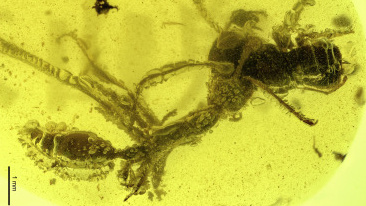Ask Ethan: Why Are The Moon And Sun The Same Size In Earth’s Sky?

It likely isn’t the rare occurrence we once thought it was.
In our Solar System, there’s one overwhelming source of mass that all the planets orbit around: our Sun. Each planet has its own unique system of natural satellites that exist in stable orbits around it: moons. Some moons, like Saturn’s Phoebe or Neptune’s Triton, are captured objects that were once comets, asteroids, or Kuiper belt objects. Others, like Jupiter’s Ganymede or Uranus’s Titania, formed from an accretion disk at the same time the planets of the Solar System formed. But from the surface of Earth, we have just one Moon — likely formed from an ancient, giant impact — and it just so happens to be practically identical in angular size to the Sun. Is that just a wild coincidence, or is there some reason behind this fact? That’s what Brian Meadows wants to know, asking:
“From a scientific point of view, what are the chances that the Moon and the Sun would appear the same size in the sky?”
It’s a great question, and one that still has great uncertainties surrounding it. Here’s what we know so far.
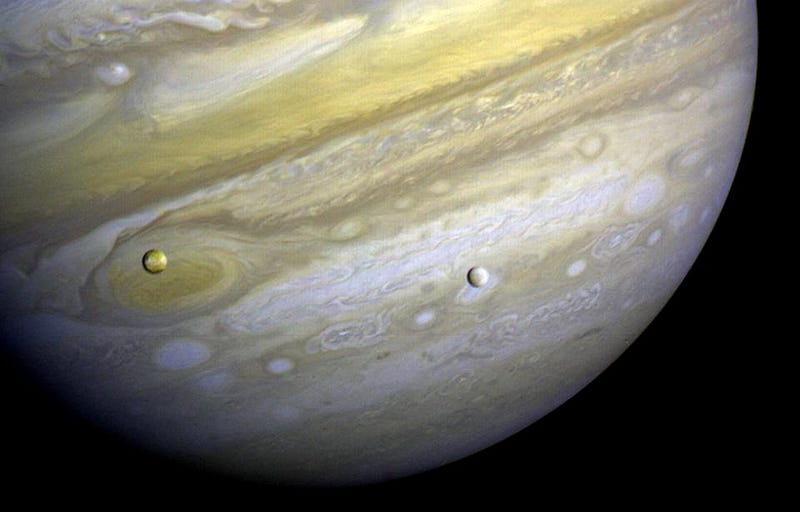
As far as moons of the Solar System go, there are four known ways that they naturally form.
- From the initial material that formed the objects of the Solar System; this is where most of the large moons around our gas giant planets come from.
- From collisions between a planet and another large body in space that kick up debris, where that material then coalesces into one or more moons around the planet.
- From other objects traversing the Solar System that become gravitationally captured by a parent planet.
- Or from material in a ring system around a planet that accretes to form a moon all on its own.
When we examine the moons found in our Solar System, we find strong evidence of all four types.
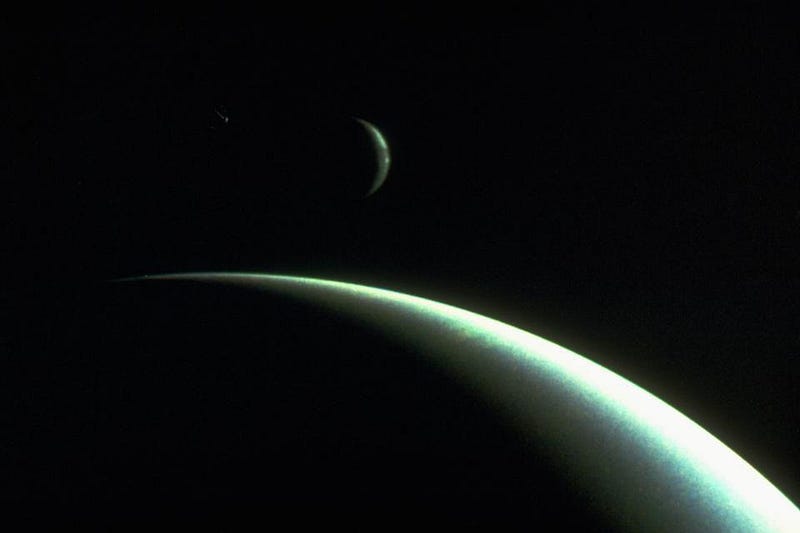
But three of those types of moons — the ones that form from the initial Solar System material, the ones that get gravitationally captured, and the ones that form from accreted ring systems — are only found around the gas giant worlds in our Solar System. The moons that we find around smaller, terrestrial worlds, including Earth, Mars, and even objects like Pluto, Eris, and Haumea, are all consistent with their moons arising from one source and one source alone: ancient impacts between a large, massive, fast-moving body and the major world itself.
We didn’t always think this was the case, but an enormous suite of evidence now exists to support it. The Apollo missions returned samples of the lunar surface to Earth, where analysis confirmed that the material composing the Moon’s and the Earth’s crust have a common origin. Measurements of the composition and orbital parameters of Mars’s moons not only point to their creation from an impact, but indicate that a third, larger, inner moon was created, and has since fallen back to Mars. And most recently, measurements by New Horizons support a picture that Charon, Pluto’s giant moon (and likely the other, outer moons) all originated from a giant impact as well.
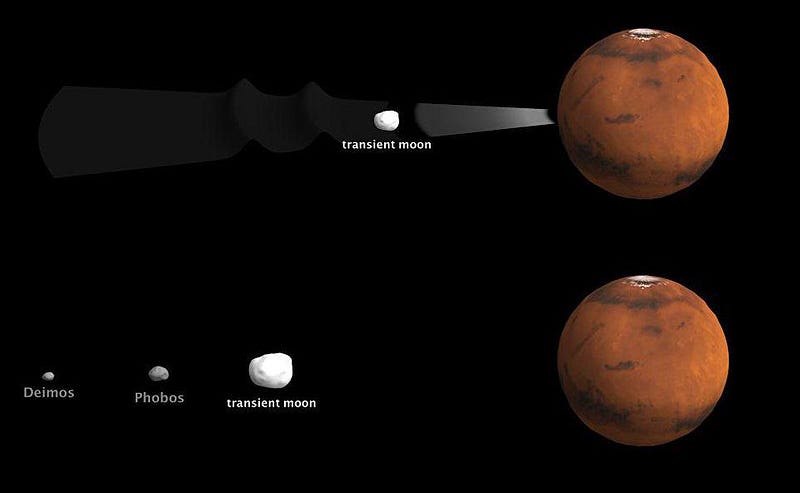
So if you’re asking a question like, “what are the odds that an Earth-like planet would have a Moon that’s approximately the same angular size as the Sun as seen from that same planet,” here are the facts we have to consider.
- The only way that we know of, so far, to get a moon around a rocky planet like Earth is to have some sort of giant impact in the planet’s past.
- We’ve only ever detected moons around rocky worlds in our Solar System, never around rocky exoplanets, as the technology to do so isn’t there yet.
- Of the rocky planets, Mercury and Venus have no moons, Earth has just the one of this “miracle” size, while Mars’s two surviving moons both appear much smaller than the Sun.
And yet, when we consider the parameters of Earth’s moon with respect to how we observe it compared to the Sun, we experience a remarkable set of circumstances that no other known system possesses.

Here on Earth, the Moon orbits our planet in almost exactly the same plane that the Earth rotates on its axis: another piece of evidence that points to our Earth and Moon having a common origin from a giant impact. When the Moon happens to pass directly between the Earth and the Sun, and all three bodies are perfectly aligned, we experience a phenomenon known as a solar eclipse. This is common to all worlds with moons that cross the planet-Sun plane, but Earth and our Moon are unique in a very exciting way.
On Earth, we can experience three different types of solar eclipse with a perfect alignment:
- Total solar eclipse — where the Moon appears to entirely block out the disk of the Sun.
- Annular solar eclipse — where the Moon fails to block out the Sun’s disk, creating an annulus (or ring) of visible Sun circumscribing the eclipsing Moon.
- Hybrid solar eclipse — where the Moon fails to block the entire Sun for a portion of the eclipse, but does successfully block the entire Sun for a different portion.
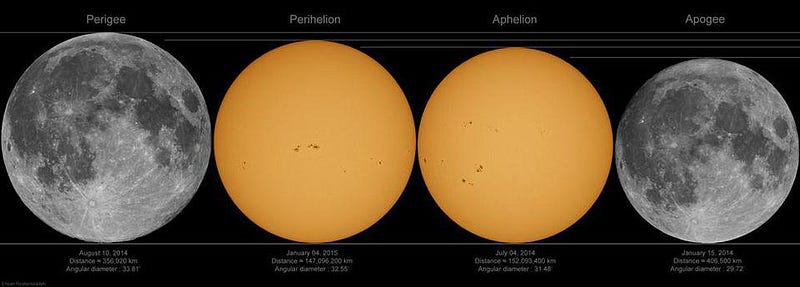
Earth only experiences all three types of solar eclipse because the Moon, in its elliptical orbit around the Earth, can appear either larger or smaller than the Sun does due to Earth’s elliptical orbit around the Sun. This is no doubt a rarity; neither of Mars’s moons is ever large enough to eclipse the Sun totally, as every eclipse from Mars is annular. Moreover, if Mars did have a third, larger, inner moon at one point, its eclipses would have always been total eclipses; annular or hybrid eclipses would have been impossible.
But there’s another point to consider: these three possibilities weren’t always what Earth experienced, and they won’t always be what Earth experiences, either. The story of our Solar System, as best as we can reconstruct it, tells a tale of an ever-changing relationship between the Earth, Moon, and the Sun. It began some 4.5 billion years ago, where our ancient protoplanetary disk, which gave rise to all the planets, began to fragment into clumps that grew, interacted, and both merged and ejected one another. There were two types of survivors: large, massive planets that held onto hydrogen and helium envelopes, and smaller, less-decisive victors, which become planets and dwarf planets.
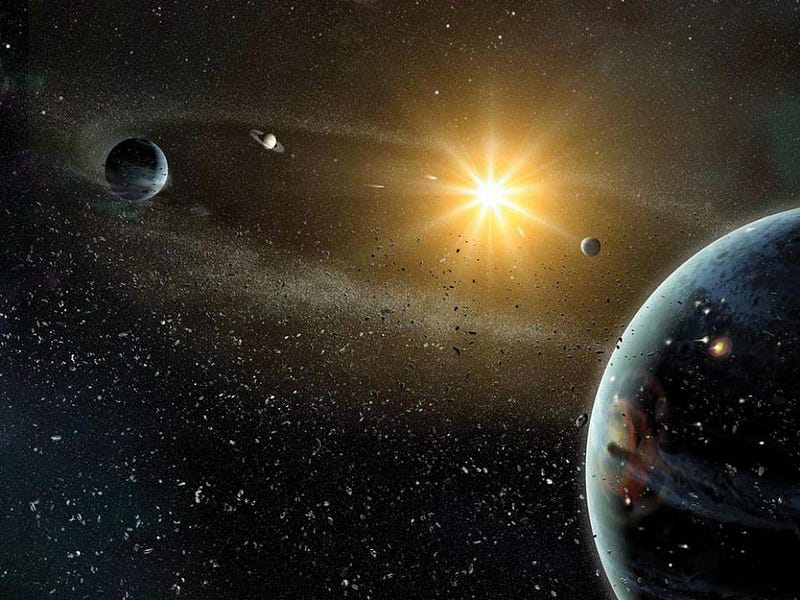
These early planets, planetoids, and planetesimals interact and sometimes collide, and those collisions — when they occur — tend to kick up large amounts of debris that surround the major planet. This shroud of post-impact material around the planet is known as a synestia, and although it’s short-lived, it’s incredibly important. Most of that material winds up falling back to the parent planet, while the rest coalesces into one or more moons. In general, the innermost moon will be the largest and most massive, and then you’ll have smaller, less massive moons that can exist at greater distances.
These moons exert differential forces on the planet: they gravitationally attract the portion of the planet that’s closer to the moon with a greater force than the portion that’s farther away. This not only creates tides on the planet, but it also results in what we call tidal braking, which causes the main planet to slow its rotation and the moon(s) to spiral away from the planet. Of course, there’s a competing effect: the planet’s atmosphere can create a drag force on the moon, drawing it closer to the planet. Depending on how the moons initially form, either effect can win.
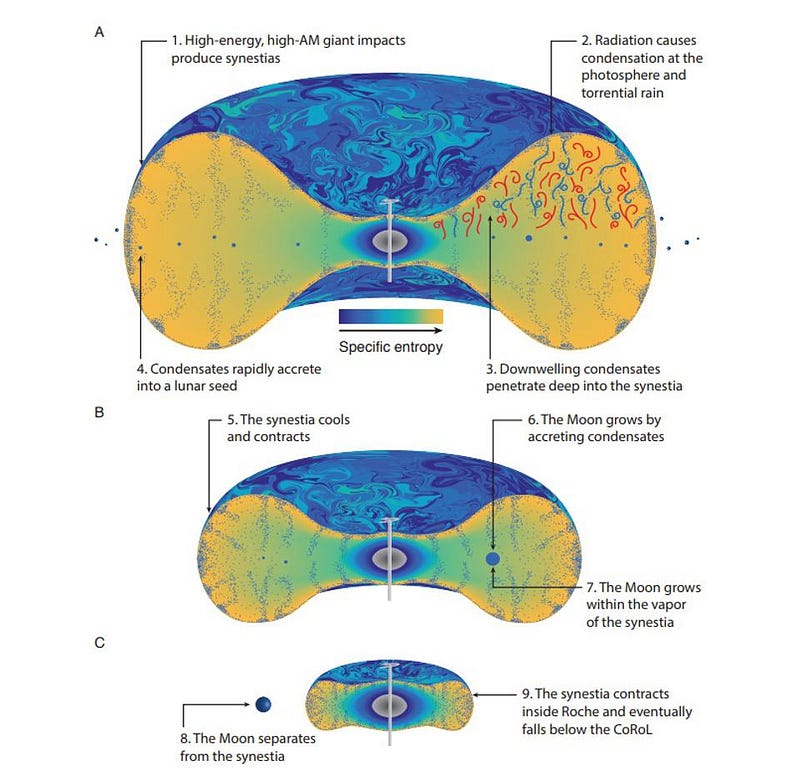
In the case of Mars, the drag force appears to have won, drawing the innermost moon in; over time, the next moon, Phobos, will eventually fall back onto Mars as well. In the case of Pluto, tidal braking is complete, and the Pluto-Charon system is now a binary planet, where Pluto and Charon are both tidally locked to one another, surrounded by four additional, outer, smaller moons.
But the Earth-Moon system is fascinating. The current thought is that, early on, the Moon was very close to Earth, and there may have been a number of smaller, outer moons beyond our own. Earth, back more than 4 billion years ago, may have been rotating incredibly rapidly, completing a 360° rotation in just 6-to-8 hours. A year, back in Earth’s early history, may have had as many as 1500 “days” in it.
But over time, the tidal friction of the Moon slowed that rotation tremendously, an act which transfers angular momentum from the spinning Earth to the orbit of the Moon. Over time, this causes the Moon to spiral away from the Earth.
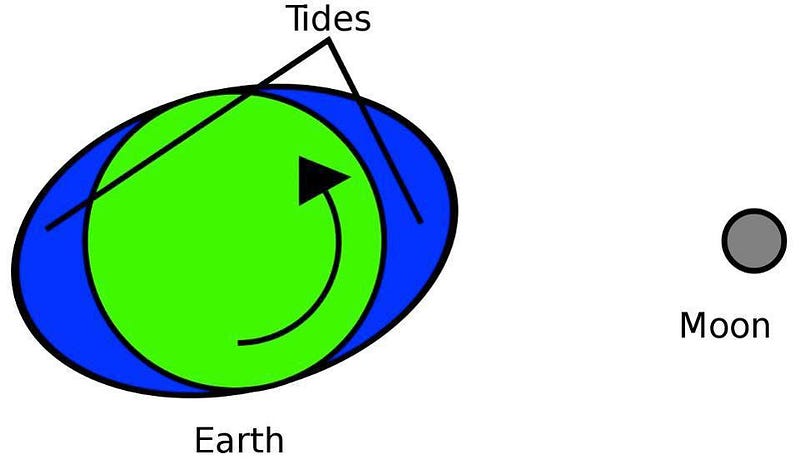
For billions of years, until only a few hundred million years ago, all of the solar eclipses on Earth were total eclipses; the Moon was close enough that it always blocked out the Sun from our perspective. In 570 million years, Earth will experience its final total solar eclipse, and in another 80 million years, its final hybrid solar eclipse. After that, all of Earth’s solar eclipses will be annular.
This means that when we look from Earth at the Moon today, and compare its angular size to that of the Sun today, we see three different types of solar eclipses, but that this is a temporary situation. The evidence indicates that, early on, the Moon was much larger in angular size than the Sun was, and that there may have been additional moons farther out. Over time, our Moon has spiraled away, and if there were smaller, more distant moons, they’ve been ejected. In the far future, the Moon will spiral out even farther, and will become eternally smaller in our sky than the Sun will ever be, for the remainder of its lifetime.
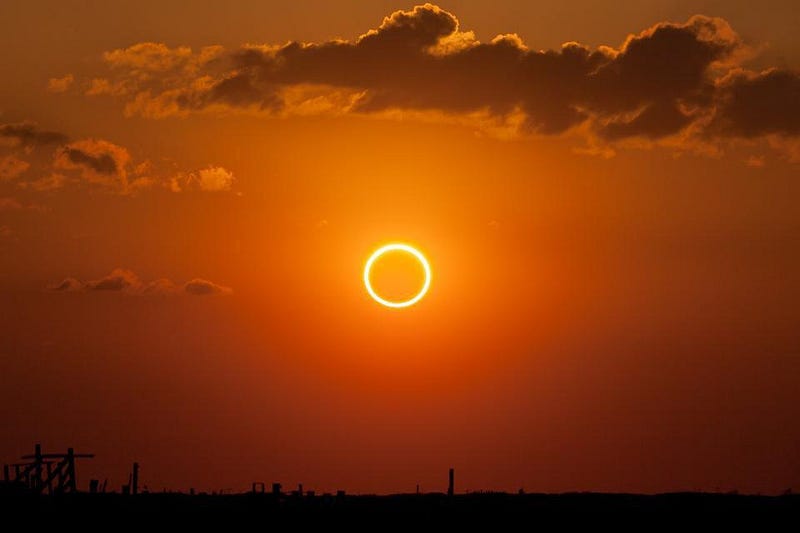
When you ask the question, “what are the odds that an Earth-like planet will have a Moon that’s comparable in angular size to the Sun,” you’re really asking what the odds are of:
- having an Earth-like planet, which is an Earth-sized planet at the right distance from its star for liquid water on its surface,
- that experienced a giant impact in its early history, creating a synestia,
- where the planet itself winds up rotating rapidly after that collision,
- where a large, inner moon gets created but won’t fall back onto the planet,
- and then spirals away as angular momentum gets transferred from the planet to the Moon.
It’s remarkable that science, despite only having information about moons around terrestrial planets in our Solar System alone, has uncovered the ingredients necessary to create the situation we have today. If you assume you get an Earth-like planet, our best estimates have enormous uncertainties, but may lead to a total probability in the range of around 1–10%. To really know the answer to this question, however, we’ll need more and better data, and for that, we’ll need to wait for the next generation of astronomical observatories.
The answers are out there, written on the face of the Universe itself. If we want to find them, all we have to do is look.
Send in your Ask Ethan questions to startswithabang at gmail dot com!
Ethan Siegel is the author of Beyond the Galaxy and Treknology. You can pre-order his third book, currently in development: the Encyclopaedia Cosmologica.




